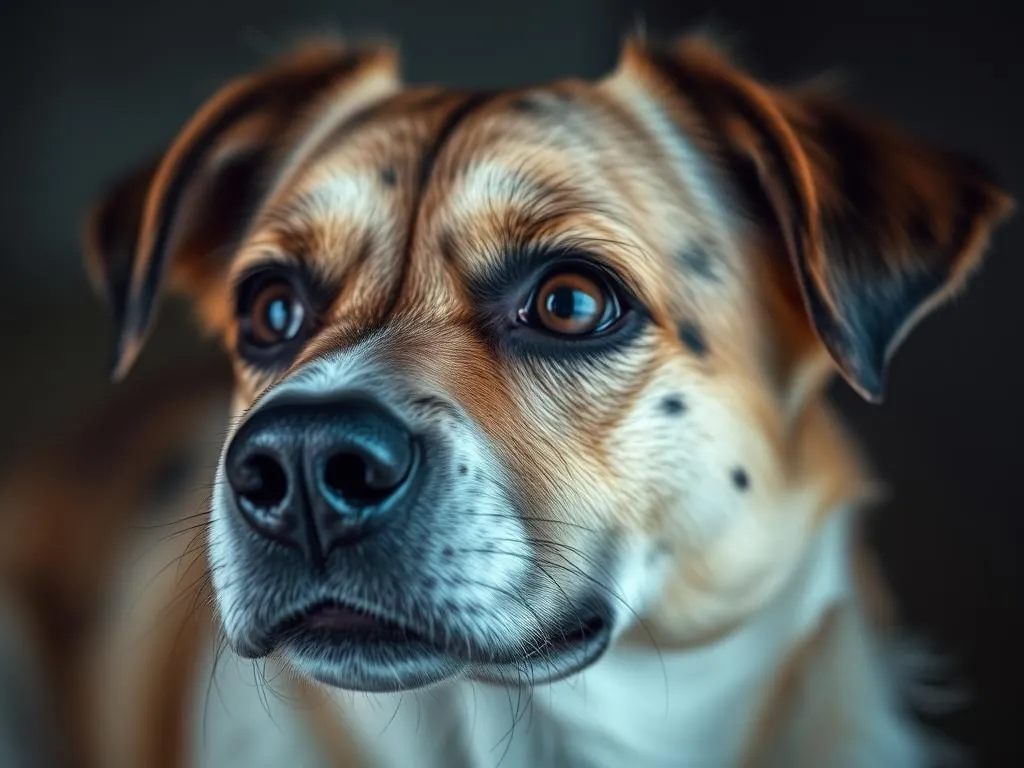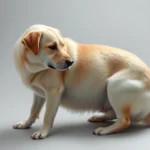
Introduction
As a devoted dog owner, you understand the importance of maintaining your pet’s health and well-being. Just like humans, dogs are susceptible to various health issues that can significantly impact their quality of life. Among these, glaucoma in dogs stands out as a serious condition that requires immediate attention. This eye disease can lead to severe pain and even blindness if not detected early and treated appropriately.
Understanding the signs of glaucoma, its causes, and the available treatment options is essential for all dog owners. Early detection can make a significant difference in the outcome for your furry friend. The objective of this article is to provide comprehensive information about glaucoma in dogs, including its symptoms, causes, diagnosis, and treatment options, to help you become an informed advocate for your pet’s health.
Understanding Glaucoma in Dogs
What is Glaucoma?
Glaucoma is an eye condition characterized by increased pressure within the eye, known as intraocular pressure (IOP). This pressure can cause damage to the optic nerve and potentially lead to blindness. There are two main types of glaucoma: open-angle and closed-angle.
- Open-angle glaucoma is more common and develops gradually. The drainage angle is open, but the eye’s drainage system is not functioning properly.
- Closed-angle glaucoma occurs when the drainage angle is blocked, leading to a rapid increase in eye pressure and requiring immediate medical attention.
Types of Glaucoma in Dogs
There are two primary types of glaucoma in dogs:
-
Primary glaucoma: This type occurs without any underlying disease and is often hereditary. Certain breeds, including Cocker Spaniels, Basset Hounds, and Siberian Huskies, are predisposed to developing primary glaucoma due to genetic factors.
-
Secondary glaucoma: This occurs as a result of another condition, such as eye injury, inflammation, or tumors. It is essential to address the underlying cause to manage this type effectively.
Causes of Glaucoma in Dogs
Genetic Factors
Inherited conditions play a significant role in the development of glaucoma in dogs. Certain breeds are genetically predisposed to increased intraocular pressure due to structural abnormalities in their eyes. For instance, Cocker Spaniels and Basset Hounds have been shown to have a higher incidence of primary glaucoma.
Other Contributing Factors
Other factors that can lead to glaucoma include:
- Eye injuries: Trauma to the eye can disrupt the drainage system, resulting in increased pressure.
- Infections: Inflammatory diseases, such as uveitis, can lead to changes in the eye that contribute to glaucoma.
- Tumors: Growths within or around the eye can block drainage pathways.
- Inflammatory diseases: Conditions that cause inflammation of the eye can disrupt normal fluid dynamics, leading to increased pressure.
Symptoms of Glaucoma in Dogs
Recognizing the symptoms of glaucoma in dogs is crucial for early diagnosis and treatment.
Early Signs
In the initial stages, you may notice:
- Excessive tearing: Increased tear production can be a sign of discomfort.
- Squinting: Dogs may squint or keep their eyes partially closed as a response to pain or pressure.
- Redness in the eye: Blood vessels may become engorged, leading to a reddened appearance.
Advanced Symptoms
As the condition progresses, additional symptoms may include:
- Cloudiness of the cornea: The eye may appear more opaque or bluish due to fluid buildup.
- Enlargement of the eye (buphthalmos): Increased pressure can cause the eye to bulge.
- Behavioral changes: Dogs may exhibit decreased activity levels or become sensitive to light.
Behavioral Indicators
You might also observe behavioral changes that indicate discomfort or distress, such as:
- Changes in appetite: Dogs may eat less or show disinterest in food.
- Avoidance of bright light: Increased sensitivity to light can lead to your dog seeking darker areas.
- Pawing at the eye: Dogs may try to rub or scratch at their eyes due to irritation.
Diagnosis of Glaucoma
Veterinary Examination
Routine veterinary check-ups are essential for early detection of glaucoma in dogs. A thorough eye examination can reveal signs of increased intraocular pressure.
Veterinarians utilize specific tools and techniques to diagnose glaucoma, including:
- Tonometry: This test measures intraocular pressure to determine if it is elevated.
- Gonioscopy: This procedure examines the drainage angle of the eye to assess its openness.
Diagnostic Tests
Additional diagnostic tests may include:
- Measuring intraocular pressure (IOP): High IOP is a definitive indicator of glaucoma.
- Visual field tests: These tests assess the dog’s vision and can indicate damage to the optic nerve.
- Ultrasound imaging of the eye: This imaging can help identify underlying issues, such as tumors or structural abnormalities.
Treatment Options for Glaucoma
Immediate Treatments
If your dog is diagnosed with glaucoma, immediate treatment is crucial to prevent permanent damage.
-
Medications: Topical eye drops and oral medications are commonly prescribed to reduce intraocular pressure. These can include carbonic anhydrase inhibitors, beta-blockers, and prostaglandin analogs.
-
Emergency care for acute glaucoma: In cases of sudden onset, your veterinarian may need to provide emergency treatment to relieve pressure quickly.
Long-term Management
Managing glaucoma in dogs often requires ongoing care, including:
-
Surgical options: In some cases, surgical procedures such as laser therapy or placement of drainage implants may be necessary to manage intraocular pressure effectively.
-
Ongoing medication management: Lifelong medication may be required to maintain acceptable pressure levels.
Palliative Care
For dogs with advanced glaucoma or those that cannot undergo surgery, palliative care becomes essential:
-
Pain management strategies: Providing pain relief is a priority. Veterinarians may prescribe pain medications to enhance comfort.
-
Quality of life considerations: Assessing your dog’s quality of life is vital, and decisions about treatment should be made with compassion and understanding.
Prevention and Risk Management
Regular Veterinary Check-ups
The best defense against glaucoma in dogs is prevention through regular veterinary check-ups. Routine eye examinations can help identify early signs of the disease, allowing for prompt intervention.
Awareness of Breeds at Risk
Being aware of breeds that are predisposed to glaucoma can help you monitor your dog’s eye health more closely. Genetic testing and screening can provide insight into your dog’s risk.
Home Care Tips
As a responsible pet owner, you can take proactive steps to reduce the risk of glaucoma:
-
Monitoring for behavioral changes: Be attentive to any signs of discomfort or changes in your dog’s behavior.
-
Eye care practices: Keeping your dog’s eyes clean and free of debris can help prevent infections that might contribute to glaucoma.
Living with a Dog with Glaucoma
Adjusting to Changes
If your dog has been diagnosed with glaucoma, adjusting your home environment can enhance their comfort. Consider:
-
Reducing bright lights: Use curtains or shades to minimize exposure to bright sunlight.
-
Creating a safe space: Ensure your home is free from obstacles to help your dog navigate comfortably.
Emotional Support for Dogs
Recognizing and addressing your dog’s emotional needs is essential. Dogs may experience anxiety or stress due to vision changes. You can provide support by:
-
Recognizing signs of anxiety and stress: Look for behaviors such as pacing, whining, or hiding.
-
Techniques to comfort and reassure pets: Spend quality time with your dog, engage them in gentle play, and offer soothing words.
Tips for Owners
Managing a dog with glaucoma requires organization and communication:
-
Keeping a medication schedule: Use reminders to ensure your dog receives their medications consistently.
-
Communicating with veterinarians: Maintain an open line of communication with your vet to address any concerns or questions as they arise.
Conclusion
Understanding and managing glaucoma in dogs is crucial for ensuring the health and well-being of your beloved pet. Early detection, timely treatment, and proactive care can make a significant difference in your dog’s quality of life. As a dog owner, your commitment to monitoring your pet’s health and seeking veterinary care when necessary is essential.
In facing health challenges together, the bond between you and your dog only grows stronger. By remaining informed and proactive, you empower yourself to provide the best possible care for your furry companion.









